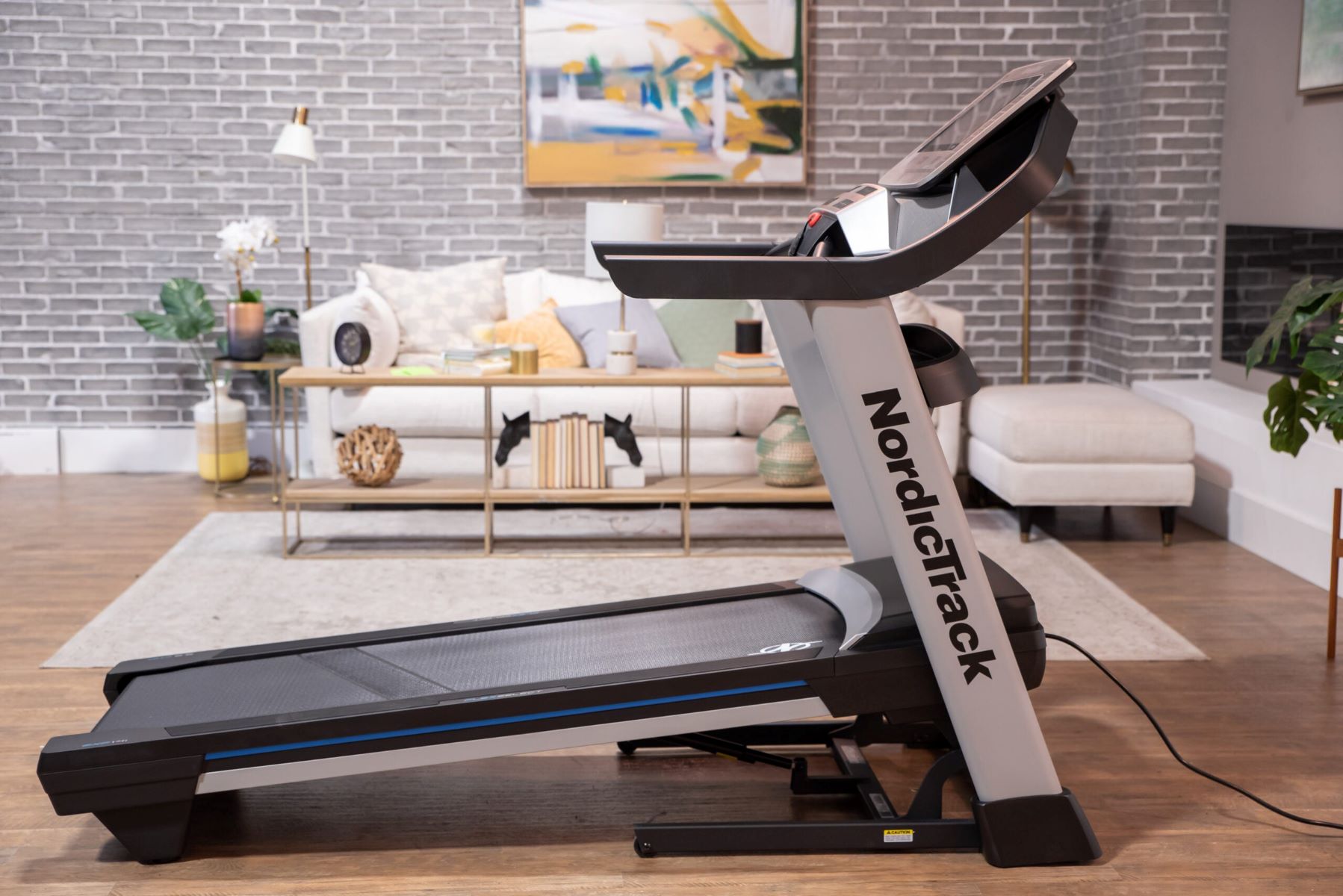Home>Misc>Featured>How To Increase Distance Running BNC Cables


Featured
How To Increase Distance Running BNC Cables
Published: August 12, 2023
Learn how to increase distance and optimize performance with our featured BNC cables. Upgrade your running setup for enhanced connectivity and signal quality.
Introduction
When it comes to running BNC cables for your audio and video setups, ensuring that you have the proper distance is crucial. BNC (Bayonet Neill Concelman) cables are commonly used in various industries, including broadcasting, telecommunications, and security systems. They are known for their high-quality signal transmission and connection stability.
Having the ability to run BNC cables over long distances can be essential in many scenarios. Whether you are setting up a professional studio, designing a surveillance system, or connecting audio and video equipment in a large venue, understanding how to increase the distance of your BNC cables is paramount to achieve optimal performance.
In this article, we will delve deeper into the world of BNC cables, focusing specifically on how to increase the distance over which these cables can effectively transmit signals. We will explore the importance of distance in running BNC cables, discuss the factors that can affect it, and provide you with valuable tips and techniques to help you extend the distance of your BNC cable runs.
So, if you’re ready to take your audio and video setups to new lengths, let’s dive into the fascinating world of running BNC cables and discover how you can maximize their potential.
What are BNC Cables?
BNC (Bayonet Neill Concelman) cables are coaxial cables that are commonly used to transmit audio and video signals in a wide range of applications. They are named after their unique connector design, which features a bayonet-style coupling mechanism that allows for quick and secure connections.
BNC cables have become popular in various industries, including broadcasting, telecommunications, and surveillance systems, due to their exceptional signal quality, durability, and ease of use. They are widely used for high-frequency applications, providing reliable transmission of signals without any loss or interference.
These cables are typically composed of a central conductor, an insulating layer, a shield, and an outer jacket. The central conductor carries the signal, while the shield provides protection against electromagnetic interference (EMI) and radio frequency interference (RFI), ensuring that the transmitted signal remains clear and uninterrupted.
BNC cables come in various types, including BNC connectors with different impedance ratings, such as 50 ohms and 75 ohms. Each impedance rating is designed for specific applications. The 50 ohm BNC cables are commonly used in data transmission, telecommunications, and computer networks, while the 75 ohm BNC cables are primarily used in video and audio applications.
One of the key advantages of BNC cables is their versatility. They can be used for both analog and digital signals, making them suitable for various devices and setups. Additionally, BNC cables are known for their ease of installation, with the bayonet style connectors providing a secure and hassle-free connection.
Overall, BNC cables are a popular choice for professionals who require high-quality signal transmission and reliable connections. Their durability, flexibility, and compatibility with a wide range of devices make them an excellent option for any audio and video setup.
The Importance of Distance in Running BNC Cables
When it comes to running BNC cables, distance plays a crucial role in ensuring optimal signal quality and performance. The distance over which BNC cables can effectively transmit signals can have a significant impact on the overall functionality of your audio and video setups. Understanding the importance of distance is essential for achieving reliable and high-quality signal transmission.
One of the primary reasons why distance is important is signal attenuation. Attenuation refers to the loss of signal strength as it travels over a distance. BNC cables are designed to minimize signal loss, but it still occurs to some extent over long cable runs. The longer the distance, the greater the potential for signal degradation. This can result in a weaker signal reaching the destination, leading to lower video quality, audio distortion, or even signal loss.
Another factor to consider is the susceptibility to interference. As BNC cables transmit signals, they can pick up electromagnetic interference (EMI) and radio frequency interference (RFI) from nearby electrical devices or other cables. This interference can weaken the signal and introduce noise or distortion. The longer the distance, the more chance there is for interference to occur, especially without proper shielding or cable management.
Furthermore, the type of signal being transmitted also influences the importance of distance. For example, in digital video and audio applications, such as high-definition (HD) or 4K video, longer distances can cause signal instability and errors in data transmission. This can result in pixelation, artifacts, or even a complete loss of the signal. In professional studio environments or live events, where high-quality audio and video are critical, maintaining the appropriate distance for BNC cables becomes vital.
Moreover, distance affects the overall reliability and efficiency of your audio and video systems. For instance, if you are running BNC cables for a surveillance system, having the capability to transmit signals over long distances enables you to cover a larger area without requiring additional equipment or repeaters. This not only saves costs but also allows for seamless monitoring and surveillance.
In summary, understanding the importance of distance when running BNC cables is essential for achieving optimal signal quality, minimizing interference, and ensuring the reliability of your audio and video setups. By considering distance as a key factor in your cable runs, you can enhance the performance of your equipment, maintain signal integrity, and ultimately deliver an exceptional audio and visual experience.
Factors Affecting Distance in BNC Cables
Several factors can impact the distance over which BNC cables can effectively transmit signals. Understanding these factors is crucial for optimizing signal quality and performance in your audio and video setups. Let’s explore the key factors that can affect the distance in running BNC cables.
1. Cable Quality: The quality of the BNC cable itself plays a significant role in the distance it can effectively cover. High-quality cables are designed with better shielding and insulation, which helps to minimize signal loss and interference. Investing in premium-grade cables ensures optimal performance over longer distances.
2. Cable Length: The length of the BNC cable is an obvious factor that affects transmission distance. As signal loss increases with cable length, it’s important to choose the appropriate length based on your specific needs. Longer cable runs may require the use of repeaters or signal boosters to maintain signal integrity.
3. Cable Gauge: The gauge or thickness of the BNC cable can also impact transmission distance. Thicker cables typically have lower resistance and, therefore, less signal loss. Choosing a cable with a thicker gauge can help maintain signal strength over longer distances.
4. Signal Type and Bandwidth: Different types of signals and higher bandwidth requirements can affect transmission distance. For example, high-definition (HD) video signals or high-frequency audio signals may experience more degradation over long distances. Understanding the specific requirements of your signal type is crucial in determining the optimal distance for BNC cable runs.
5. Interference and Noise: BNC cables are prone to picking up electromagnetic interference (EMI) and radio frequency interference (RFI) from nearby electrical devices or other cables. The quality of the shielding and the presence of proper grounding can significantly reduce interference, ensuring signal clarity over longer distances.
6. Connector Quality: The quality of the BNC connectors used in the cable can impact signal transmission. High-quality connectors provide better contact and stability, minimizing signal loss and interference. Ensure that you use reliable connectors that are suitable for your specific application.
7. Environmental Factors: The environment in which the BNC cables are installed can also affect transmission distance. Factors such as temperature, moisture, and physical obstructions can impact signal quality and range. Proper cable management and installation practices can mitigate these environmental challenges.
By considering these factors, you can make informed decisions when it comes to running BNC cables. Taking into account the cable quality, length, gauge, signal type, interference, connectors, and environmental factors will help you optimize the distance for your specific audio and video needs.
Tips and Techniques for Increasing Distance in Running BNC Cables
When it comes to extending the distance over which BNC cables can effectively transmit signals, there are several tips and techniques that you can implement to optimize their performance. By following these strategies, you can increase the range of your BNC cable runs and ensure reliable signal transmission. Let’s explore some of the key tips:
1. Use High-Quality Cables: Invest in high-quality BNC cables that are specifically designed for long-distance signal transmission. Look for cables with superior shielding, thicker gauge, and low-loss properties. Quality cables help minimize signal loss and interference, ensuring optimal performance over longer distances.
2. Proper Cable Routing: Pay attention to the routing and management of your BNC cables. Avoid running them alongside power cables or other sources of electrical interference. Maintain proper separation and use cable clips or conduit to reduce the risk of signal degradation due to electromagnetic interference (EMI) and radio frequency interference (RFI).
3. Signal Boosters and Amplifiers: Consider incorporating signal boosters or amplifiers into your BNC cable setup, especially for longer cable runs. These devices help restore and amplify the signal, compensating for any potential loss. They are particularly useful when transmitting high-definition video or high-frequency audio signals.
4. Use Quality BNC Connectors: Ensure that you use high-quality BNC connectors that provide a secure and reliable connection. Loose or poorly made connectors can introduce signal loss and interference. Consider using connectors with gold-plated contacts for better conductivity and longevity.
5. Minimize Cable Length: Keep the cable length as short as possible while still meeting your requirements. Remember that signal loss increases with cable length, so reducing unnecessary length helps maintain signal integrity. Properly measure and plan your cable runs to avoid excessive lengths that may result in degraded signal quality.
6. Proper Grounding: Ensure that your BNC cables and the equipment they are connected to are properly grounded. Grounding helps reduce electrical noise and interference, improving signal quality. Follow industry standards and guidelines for grounding practices to achieve optimal results.
7. Regular Inspections and Maintenance: Regularly inspect your BNC cables and connectors for any signs of wear and damage. Damaged cables or connectors can lead to signal loss and degraded performance. Replace any faulty components promptly to maintain optimal signal transmission over distance.
8. Test and Verify Signal Quality: Use signal testing equipment to verify the quality and integrity of your BNC cable runs. Perform signal tests at different points along the cable to ensure consistency. This helps identify any issues or weaknesses that may need to be addressed for longer cable distances.
By implementing these tips and techniques, you can extend the distance over which your BNC cables can effectively transmit signals. From using high-quality cables and connectors to optimizing cable routing and incorporating signal boosters, these strategies will help ensure a reliable and high-performance audio and video setup.
Conclusion
Running BNC cables over long distances is essential for achieving optimal signal quality and performance in audio and video setups. The distance over which BNC cables can effectively transmit signals can significantly impact the functionality and reliability of your systems.
Throughout this article, we explored the world of BNC cables, understanding their importance and the factors that can affect the distance over which they can transmit signals. We learned that cable quality, length, gauge, signal type, interference, connectors, and environmental factors all play a role in determining the maximum distance of BNC cable runs.
To ensure the best possible performance, we discussed various tips and techniques for increasing the distance of BNC cables. From using high-quality cables and connectors to proper cable routing, incorporating signal boosters, and performing regular inspections and maintenance, these strategies can help you optimize your audio and video setups.
Remember to choose high-quality BNC cables with proper shielding, route your cables away from sources of interference, use signal boosters or amplifiers if necessary, and maintain proper grounding. Regularly inspect and test your cables to ensure signal quality and address any issues promptly.
By following these guidelines, you can extend the distance over which your BNC cables can effectively transmit signals, allowing you to build reliable audio and video systems for a wide range of applications.
So, whether you are setting up a professional studio, designing a surveillance system, or connecting audio and video equipment in a large venue, make sure to consider the importance of distance and implement these tips and techniques to maximize the potential of your BNC cables.



